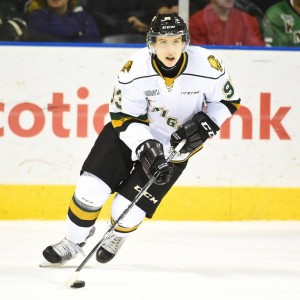The Post Boys of Negative Miscasts
When the word ‘miscast’ is being tossed around in the ‘Centre of the Hockey Universe,’ Leafs Nation automatically think of the names Tyler Bozak and Dion Phaneuf in the post-NHL lockout era dating back to 2005.
In the fans’ and hockey analysts’ view, Bozak has been miscast for years as the Toronto Maple Leafs’ Number One Centre, whose numbers are mediocre at best–his career high is an uninspiring 49 points, achieved in back-to-back seasons over the last two NHL campaign in 2013 to 2014 and again in 2014 to 2015–despite having played on the same line as the now-departed star sniper, Phil Kessel. In fact, Bozak’s miscast goes all the way back to when he entered the league in the 2009 to 2010 season as an undrafted standout having previously played for the Victoria Salsa in the British Columbia Hockey League and then for the University of Denver Pioneers in the Western Collegiate Hockey Association when then-Leaf GM Brian Burke successfully out bided rival teams for Bozak’s service.

Likewise, Phaneuf failed to live up to his initial billing as a stud D-man who would stabilize the Leaf blue line as the team’s undisputed franchise defenseman. Yet, his declining offensive production since his heydays as a Calgary Flame and his subpar mobility, which is badly exposed in the ‘New NHL’ that emphasize skill and speed, no doubt led to the conclusion that he has been miscast as Toronto’s Number One Defenseman. In fact, the consensus seem to paint Phaneuf as a serviceable Number Three, Four, or Five D-man on a good team that can afford to shield him from having to log 25 to 30 minutes a game and face top opposing players on a nightly basis.
ICYMI @Real_ESPNLeBrun on Kadri's PP demotion, Phaneuf miscast? http://t.co/rud1qmqbb6 pic.twitter.com/z7OjhftuTL
— OverDrive (@OverDrive1050) November 25, 2014
Miscasts Beyond Premium Positions
The Maple Leafs’ miscasts, by no means, are restricted to the premium, i.e., centre and defense, positions. Between Hall-of-Famer Ed Belfour and the current goaltending tandem of Jonathan Bernier and James Reimer–notwithstanding Jean-Sébastien Giguère who was a competent but aging stopgap starting goalie from 2009 to 2011, Toronto featured Andrew Raycroft (2006 to 2008) and Vesa Toskala (2007 to 2010) as its starting goalie even though neither players were bona fide number one starter. Ironically, the prospect (Tuukka Rask) whom Toronto traded away for Raycroft was the one who developed into an elite goalie but that is another story.

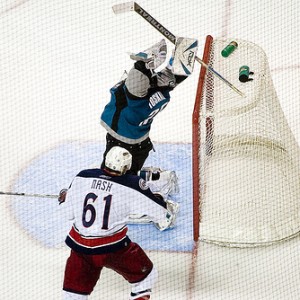
The Flip Side of Miscasts:
Most of the attention that comes with ‘miscast’ is fixated on the negativities associated with players being thrust into roles that require them to perform beyond their capabilities, i.e., putting players into situations that are in over their head. Yet, what often gets ignored is the flip side of the coin when players are miscast in a positive way–speaking from the team’s perspective, of course. For instance, Jordan Staal was relegated to third-line centre duties during his time in Pittsburgh because the Penguins have Sidney Crosby and Evgeni Malkin above Staal on the depth chart.

Likewise, long-time Maple Leafs captain Mats Sundin would have been miscast as a third-line centre in Quebec if the Nordiques had decided to keep him for the 1994 to 1995 season, mostly because the team already had tremendous depth at the centre position with franchise centremen Joe Sakic and Peter Forsberg occupying the top-two lines. Indeed, recognizing the logjam at the centre position, the Nordiques was able to trade Sundin to Toronto (along with Defenceman Garth Butcher, prospect Todd Warriner, and Quebec’s first-round selection–10th overall–for Left Winger Wendel Clark, Defenceman Sylvain Lefebvre, prospect Landon Wilson, and the Leafs’ first-round pick–22nd overall) at the 1994 NHL Entry Draft on June 28, 1994.
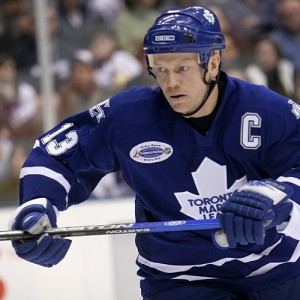
Similarly, if I want to extend my point, there are plenty of less-obvious examples of good miscasts. Case in point: Mark Messier was the second-line centre for Edmonton Oilers dynasty when Wayne Gretzky patrolled the first line until the latter was traded to the Los Angeles Kings in 1988 even through Messier was one of the best centres of all time. Same goes for Ron Francis, who played behind Mario Lemieux during Pittsburgh’s back-to-back Stanley cup championships in 1991 and 1992 even though Francis is a Hall-of-Fame centre who starred for the Hartford Whalers before being traded along with Defenceman Ulf Samuelsson for centre John Cullen and Defenceman Zarley Zalapski. Ditto for Malkin, who is arguably a generational centre himself despite playing behind current face of the NHL, Crosby. In retrospect, neither Andy Moog nor Bill Ranford were number two goalies even though they backed up Grant Fuhr respectively during their Edmonton tenure in the 1980s before making their presence felt as the ‘go to guy.’
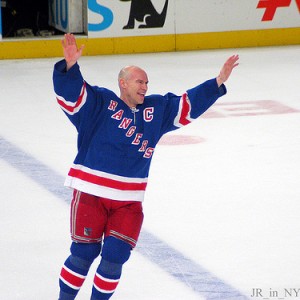
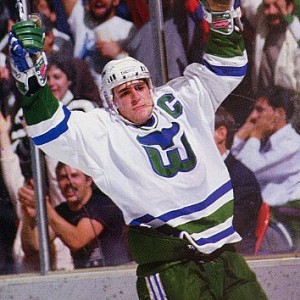

A New Hope?
Teams that are able to miscast players in a positive light are undoubtedly in an envious state that rival teams would dearly love to be in. The common denominator as to why these hockey clubs were able to put themselves into this position, often not done by trial and error, is because they were able to build up strength (almost always through the draft) in the given position(s). In the post-lockout era, the Maple Leafs have strictly experienced the dark side of miscast and not gotten a taste of the light side of miscast, which by all account, can be attributed to its horrendous draft record in the pre-Shanahan era and asset mismanagement (e.g., trading away high draft picks for Band-Aid solutions and quick fixes). That said, things may finally be taking a turn for the best since bloody Sunday in Leaf land given that the current administration headed by Shanahan, Mark Hunter, and Kyle Dubas are committed to building the team the right way with an emphasis on sill and speed above all other attributes (e.g., drafting Mitch Marner with the 4th overall selection in the 2015 NHL Entry Draft). This refreshing philosophy, which is long overdue, may one day bring Toronto to a place where it can deliberately miscast a player in a beneficial way (e.g., playing a first-centre on the third line) because the hockey club can afford to do so. Many of us are still waiting for that day!
